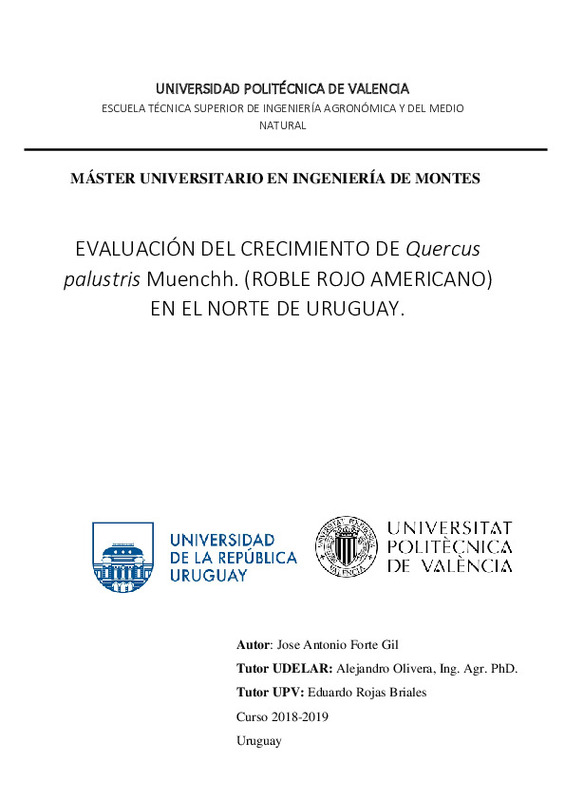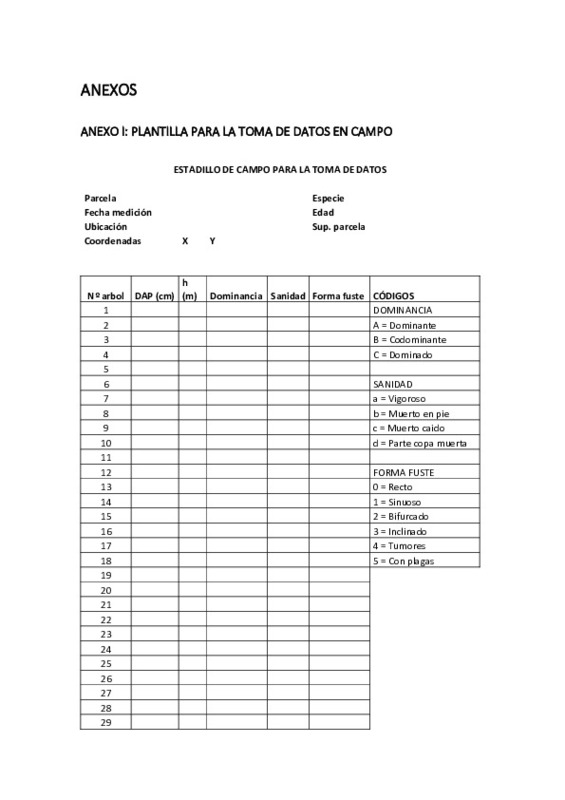JavaScript is disabled for your browser. Some features of this site may not work without it.
Buscar en RiuNet
Listar
Mi cuenta
Estadísticas
Ayuda RiuNet
Admin. UPV
Evaluación del crecimiento de "Quercus palustris Muenchh." (Roble Rojo Americano) en el Norte de Uruguay
Mostrar el registro completo del ítem
Forte Gil, JA. (2019). Evaluación del crecimiento de "Quercus palustris Muenchh." (Roble Rojo Americano) en el Norte de Uruguay. http://hdl.handle.net/10251/132178
Por favor, use este identificador para citar o enlazar este ítem: http://hdl.handle.net/10251/132178
Ficheros en el ítem
Metadatos del ítem
| Título: | Evaluación del crecimiento de "Quercus palustris Muenchh." (Roble Rojo Americano) en el Norte de Uruguay | |||
| Autor: | Forte Gil, José Antonio | |||
| Director(es): | Olivera, Alejandro | |||
| Entidad UPV: |
|
|||
| Fecha acto/lectura: |
|
|||
| Resumen: |
[ES] Este trabajo se ha centrado en el estudio del crecimiento y producción de madera de
Quercus palustris, uno de los robles rojos americanos, con el fin de cuantificar el crecimiento de
esta especie en el Norte de ...[+]
[EN] This work has focused on the study of the growth and production of wood of Quercus
palustris, one of the American red oaks, in order to quantify the growth of this species in
northern Uruguay, and thus generate ...[+]
|
|||
| Palabras clave: |
|
|||
| Derechos de uso: | Reserva de todos los derechos | |||
| Editorial: |
|
|||
| Titulación: |
|
|||
| Tipo: |
|
Localización
recommendations
Este ítem aparece en la(s) siguiente(s) colección(ones)
-
ETSIAMN - Trabajos académicos [3541]
Escuela Técnica Superior de Ingeniería Agronómica y del Medio Natural








